Log Book:
Step,
Left foot.
Right.
Plunge ice ax.
Darkness all around.
Find the rhythm.
Left foot,
Right.
Step.
Follow the rope.
Crevasse on the left.
One hundred feet below.
3am
Darkness on the ridge
Darkness in the valley.
Right foot,
Left.
Step
Find the rhythm.
Breathe.
Plunge ax.
Up hill,
An avalanche in the distance
In the darkness.
Boot, step, breathe.
Keep moving.
No slack in the rope.
Rhythm.
Breathe
Thin air.
Left foot,
Right.
Step.
Breathe.
Ice ax, plunge.
Solid.
Step,
Rhythm.
The moon hangs high over the ridgeline winking down. The mountain rumbles warnings to turn back.
Breathe.
A shooting star stabs through the Big Dipper. Glowing embers of daylight tinge the horizon.
Step, breathe, plunge, move.
The summit is near, and closer with each step.
Every step up will be a step back down.
Step, rhythm,
Breathe.
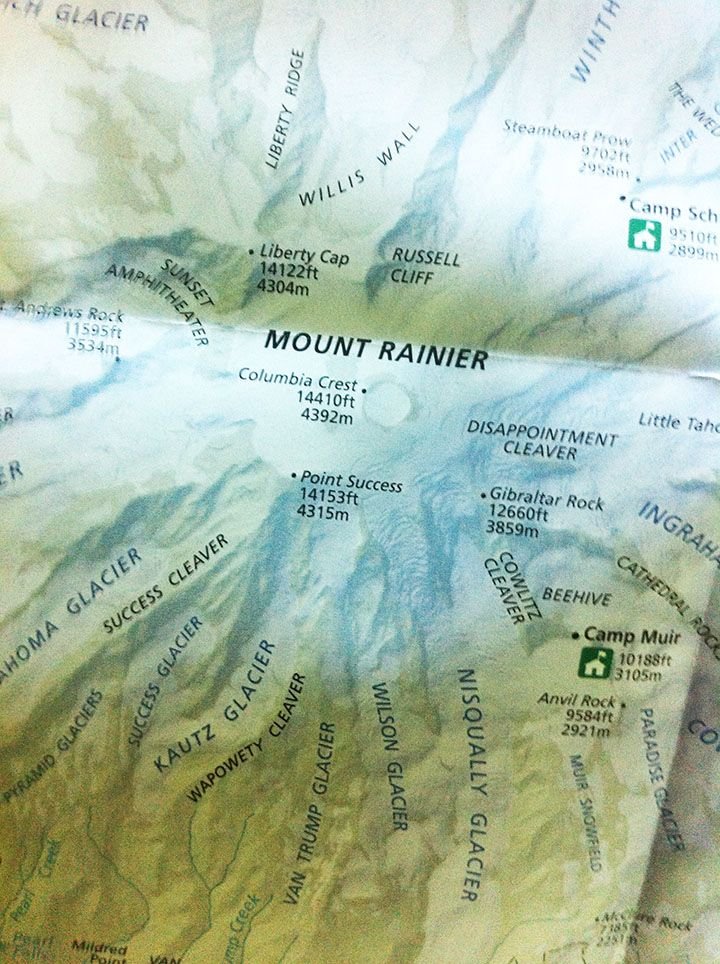
The intended route for our climb was up the Muir Snowfield, to Camp Muir at 10,188 feet, and take a day of rest to acclimate. Then cross Cowlitz Glacier, climb up the Cathedral Gap, hike over the Ingrahm Flats to Disappointment Cleaver, and up, and up, and up to the top.
Sadly, the guidebook we used was published way before the significant glacial melt. The routes described in the book needed to be updated and/or deviated from course. Nothing drastic or more dangerous than already expected, snow melt and changes. Though, sad to witness first hand how climate change has been impacting these once giant thick glacial fields. Now melting faster then they can regenerate. Like rings in a tree trunk, layers in glacial cliffs reveal thinner and thinner seasons of growth, while showing massive levels of receding. I saw it for the first time at the Athabasca Glacier in Alberta, Canada. Markers in the ground showed the recession line of the glacial toe over the years. I recommend the documentary “Chasing Ice,” to see the significance this occurring depletion.
The first third of the hike to Camp Muir is on a gravel trail covered in rock, grass, trees, and tourist. Flocking hordes of people visiting Mount Rainier National Park, and why wouldn’t they, it’s awesome! I’d recommend it. Hiking around the area is gorgeous.
The rest of the trail was up rock and ice. We geared up with crampons and pushed on.
All the trail was uphill and into the clouds.
We reached camp moments before sunset, tired, hungry, and a bit chilled (my feet were frozen and my shirt wet with sweat). Winds came howling down on us over 30mph. They beat down on the thin nylon of our tent walls. Showing us how insignificant we were to her elements. Building a tent on a glacier tends to be difficult when anchoring it to the ground. Spikes in snow don’t hold up as well as in solid dirt.
We gathered bowling ball size rocks and placed them inside the tent hoping not to take a 10,000 foot flight off the side of the mountain. A ride I didn’t buy a ticket for. That night the bellows of the mountain tried to pry us from her belly.
Log Book: In the last moments of light we crawl in our tent replacing the wet sweat layers with dry clothes and attempt to sleep with the wind pushing the roof of our tent down on our faces. I rolled zipped up in a cocooned mummy bag to capture every bit of heat possible as the cold night and winds try to strip it from me.
The dream of my car breaking down, fix it and all the problems in the yard. The wind rips at the tent, clawing like an old crow prying open a ribcage. I try to sleep as the walls collapse in. The night is long, and cold, and unforgiving.
Earplugs are very important item (along with the many others) to bring when mountain adventuring. Sleeping is often difficult, uncomfortable, and noise due to weather or other people can cause serious sleep deprivation. A huge fatigue factor in mountain climbing. That night it was the wind crashing in and fluttering our tent against our faces. Without earplugs I doubt I would have been able to sleep at all that night, or the next.
And in the morning, it was glorious. I can’t recall a more breathtaking scene ever before in my life: literally waking up above the clouds.
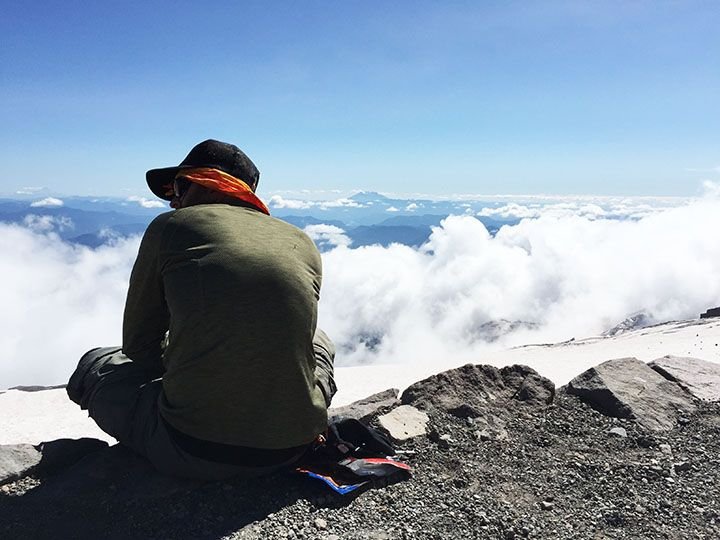
A little morning meditation at the edge of the world with Mount St Helen out in the distance.
On the seventh day we rested:
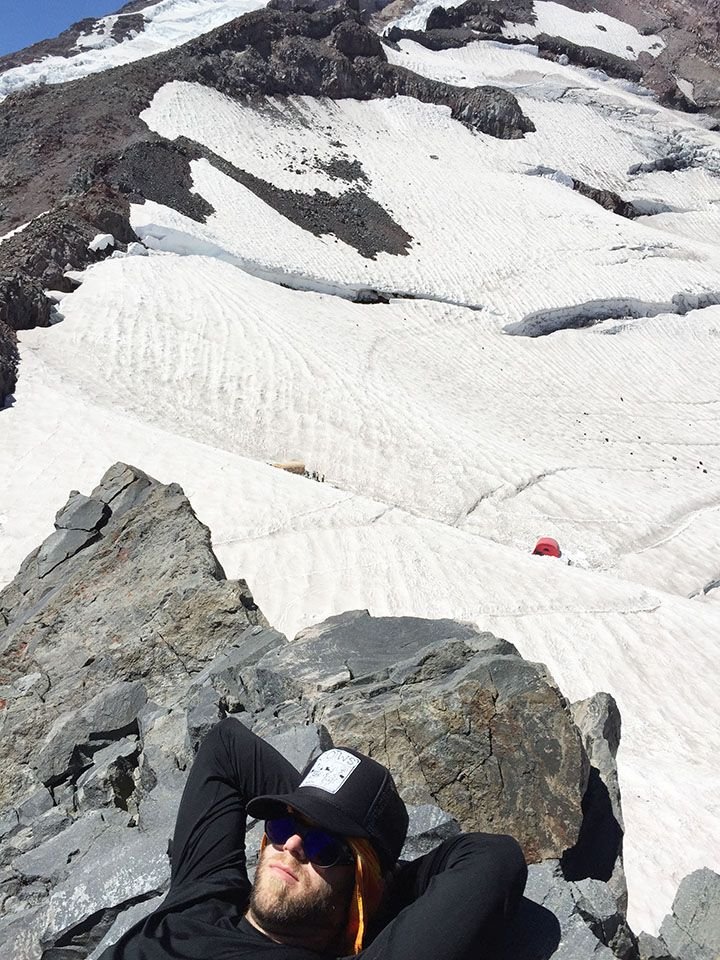
Because, at 11pm that night we would start for the summit.
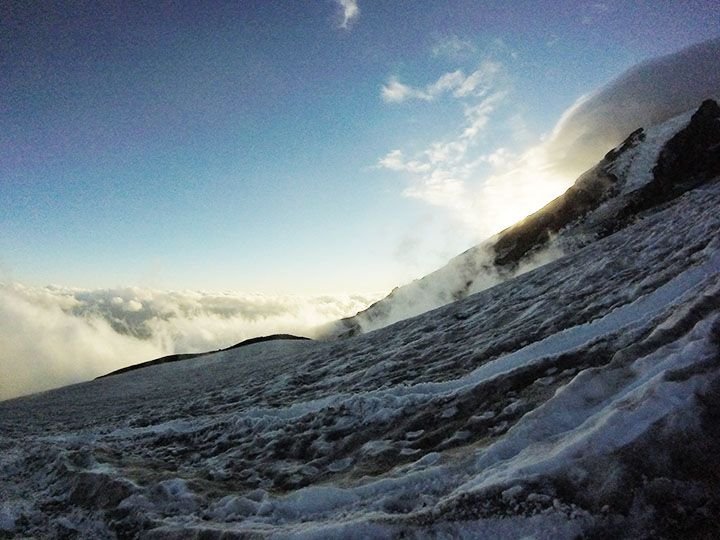
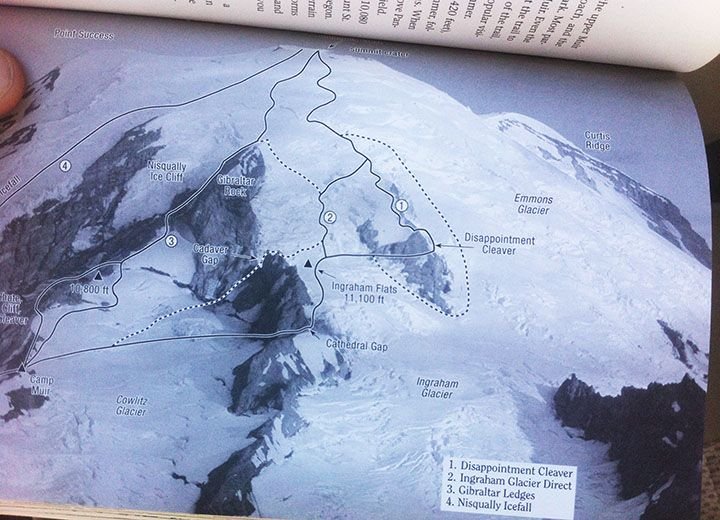
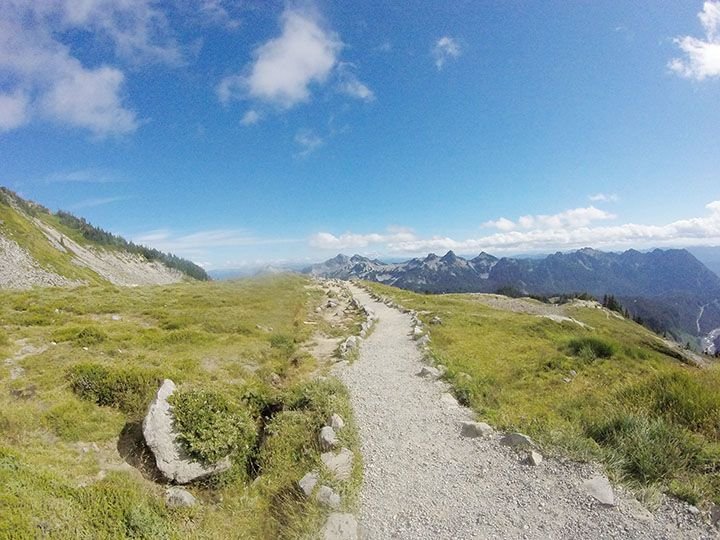
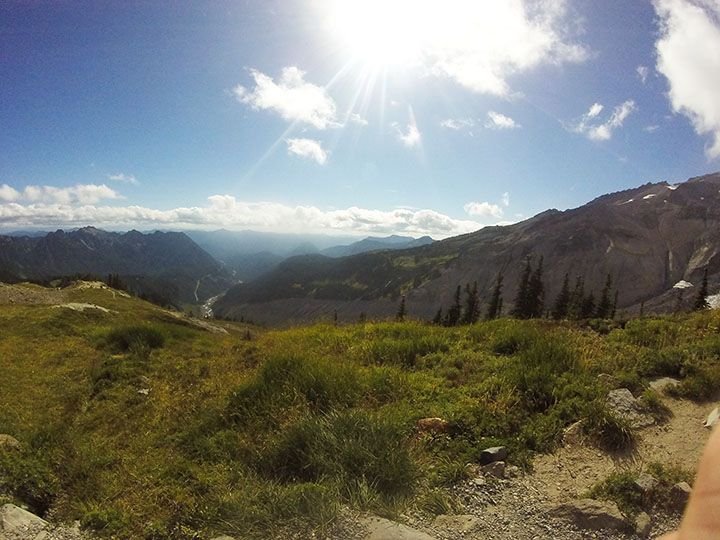
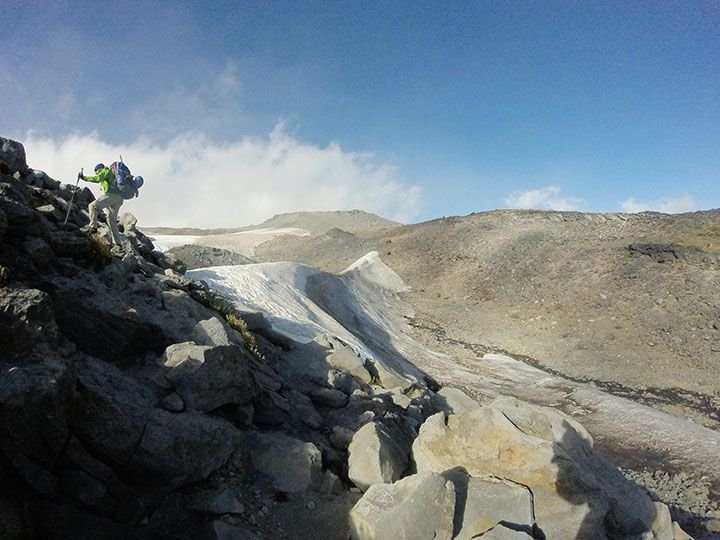
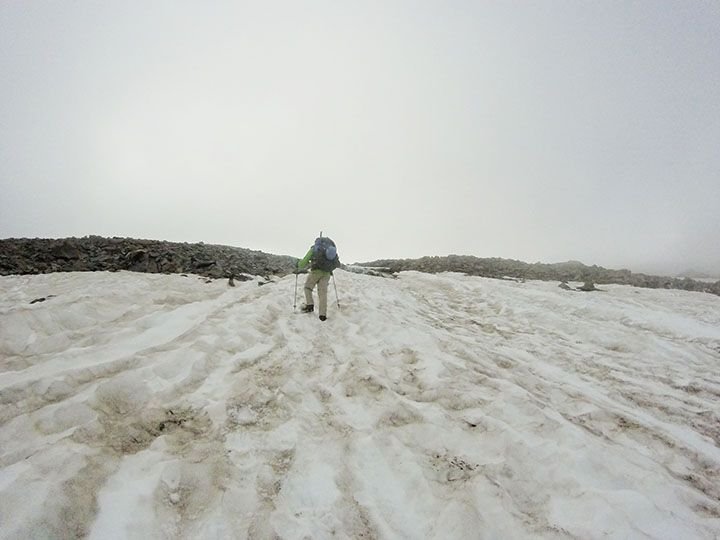
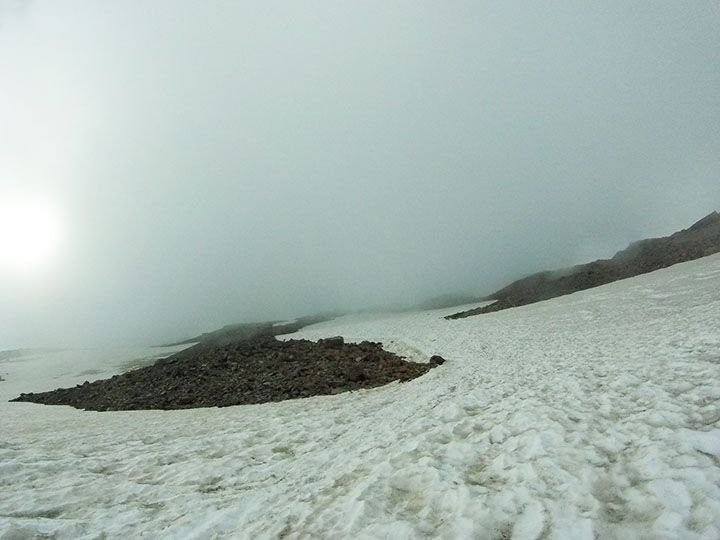
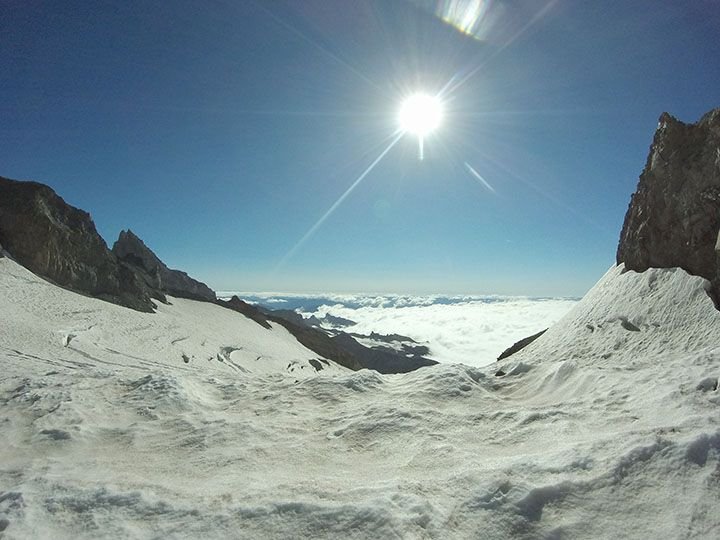
Really dig the 'log book' at the top of this post. That methodical self dialogue. Almost like you have to talk to your legs to get them doing what you want. Awesome adventure and story.
Don't know how eager I'd be to check out a place called "Disappointment Cleaver"... Maybe it's better than the name implies? haha.
Chasing Ice was defo a great doc to watch. Pretty eye opening in regards to the scale of change that's happening at these glaciers.
Thanks man. I pretty much had to talk myself through each painful step upwards. Without finding the rhythm there would be no flow. Disappointment Cleaver turned out pretty gnar nar. It did not fail to disappoint in my stomach dropping and a 'shit myself' moment looking over the edge traversing a sketch icy cliff in the dark. It was the one moment during the whole trip I felt that tickle of fear.
Looks pretty damn fun. I'm sorry about your guidebook, I know how that can screw with landmarks and things of that nature, to add to the confusion.
Yeah, no beef on the guidebook. Better to have something than nothing to go by. Routes change do to snow bridges melting and crevasses opening. What was sad was the significant glacial melt happening.
Fair point- not having one at all would suck. I've been up to Mt. Hood in Oregon a few times to snowboard. They officially downgraded it from "glacier" to "snow field" a few years ago when I was bumming around those parts. Super sad
Dang. Sadness.
Still wish I was brave enough to cross ladders over a crevasse. I'm just not as cool as you!
It’s not about coolness, it’s balance, and maybe not looking down. One foot in front of the other. Kind of like walking across a small foot bridge.